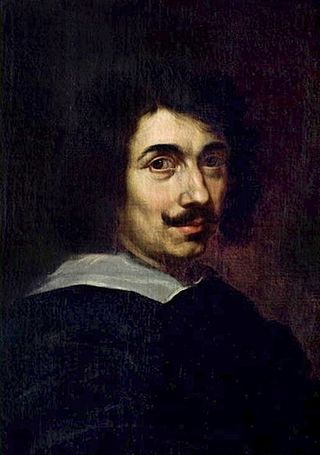
Claude Lorrain was a French painter, draughtsman and etcher of the Baroque era. He spent most of his life in Italy, and is one of the earliest important artists, apart from his contemporaries in Dutch Golden Age painting, to concentrate on landscape painting. His landscapes are usually turned into the more prestigious genre of history paintings by the addition of a few small figures, typically representing a scene from the Bible or classical mythology.

John Constable was an English landscape painter in the Romantic tradition. Born in Suffolk, he is known principally for revolutionising the genre of landscape painting with his pictures of Dedham Vale, the area surrounding his home – now known as "Constable Country" – which he invested with an intensity of affection. "I should paint my own places best", he wrote to his friend John Fisher in 1821, "painting is but another word for feeling".
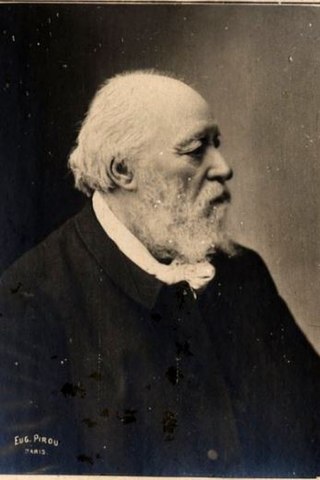
François-Louis Français (1814–1897), usually known as Louis Français, was a French painter, lithographer and illustrator who became one of the most commercially successful landscape painters of the 19th century. A former pupil of Gigoux, he began his career by studying lithography and wood engraving, becoming a prolific illustrator and printmaker. His work as an illustrator is to be found in around forty books and numerous magazines from the late 1830s to the 1860s. Français also produced a large number of pen and ink drawings, enhanced by sepia, notable for their attention to detail and for their technical adroitness and conciseness.
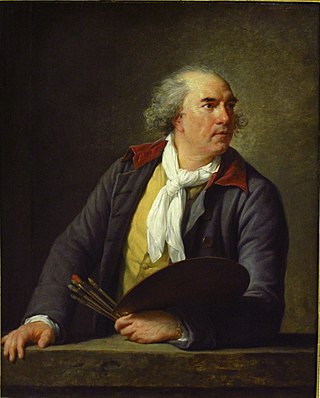
Hubert Robert was a French painter in the school of Romanticism, noted especially for his landscape paintings and capricci, or semi-fictitious picturesque depictions of ruins in Italy and of France.
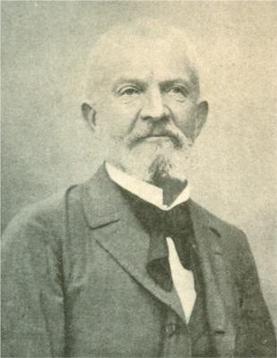
Armand Guillaumin was a French impressionist painter and lithographer.

Johan Barthold Jongkind was a Dutch painter and printmaker. He painted marine landscapes in a free manner and is regarded as a forerunner of Impressionism.

The Hamburger Kunsthalle is the art museum of the Free and Hanseatic City of Hamburg, Germany. It is one of the largest art museums in the country. The museum consists of three connected buildings, dating from 1869, 1921 (Kuppelsaal) and 1997, located in the Altstadt district between the Hauptbahnhof and the two Alster lakes.

The Petit Palais is an art museum in the 8th arrondissement of Paris, France.
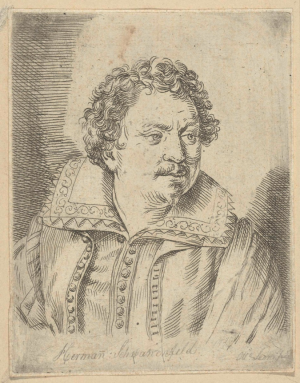
Herman van Swanevelt was a Dutch painter and etcher from the Baroque era.
Ged Quinn is an English artist and musician. He studied at the Ruskin School of Art and St Anne's College in Oxford, the Slade School of Art in London, the Kunstakademie Düsseldorf and the Rijksakademie in Amsterdam. He now lives and works in the UK.
Claude Monet painted several series of nearly 100 impressionist oil paintings of different views of the Thames River in the autumn of 1899 and the early months of 1900 and 1901 during stays in London. One of these series consists of views of the Palace of Westminster, home of the British Parliament, and he began the first of these paintings at about 15.45 on 13 February 1900. All of the series' paintings share the same viewpoint from Monet's window or a terrace at St Thomas' Hospital overlooking the Thames and the approximate canvas size of 81 cm × 92 cm. They are, however, painted during different times of the day and weather conditions.

David Tremlett is an English/Swiss sculptor, installation artist and photographer. He lives and works in Bovingdon, Hertfordshire, England. He is married to Laure Genillard who runs an art space in London, they were married in 1987.
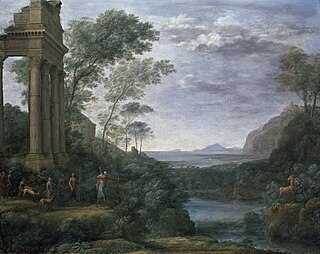
Landscape with Ascanius Shooting the Stag of Sylvia is a painting of 1682 in oil on canvas by Claude Lorrain, a painter from the Duchy of Lorraine who spent his career in Rome. It was painted in Rome for Prince Lorenzo Onofrio Colonna (1637–1689), Claude's most important patron in his last years, and is now in the Ashmolean Museum, Oxford. It is signed, dated with the year, and inscribed with the subject, as Claude sometimes did with his less common subjects.
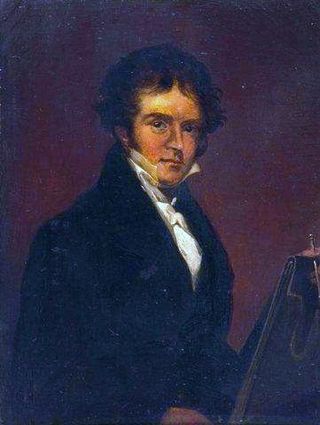
William Linton was a British landscape artist.
James Welling is an American artist, photographer and educator living in New York City. He attended Carnegie-Mellon University where he studied drawing with Gandy Brodie and at the University of Pittsburgh where he took modern dance classes. Welling transferred to the California Institute of the Arts in Valencia, California in 1971 and received a B.F.A. and an M.F.A. in the School of Art. At Cal Arts, he studied with John Baldessari, Wolfgang Stoerchle and Jack Goldstein.
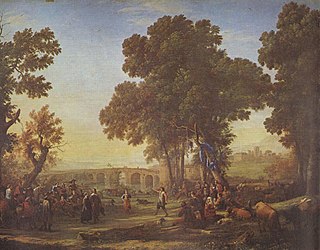
Village Fête is an oil-on-canvas by French artist of the Baroque Claude Lorrain, painted in 1639 and given to Louis XIV in 1693 together with its companion Seaport at Sunset, by landscape architect and gardener André Le Nôtre. It is currently held and exhibited at the Louvre in Paris.
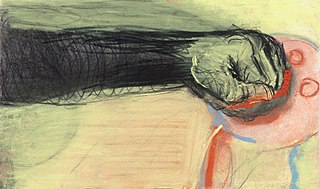
Miriam Cahn is a Swiss painter.

Springtime or The Reader is an 1872 painting by the French Impressionist painter Claude Monet. It depicts his first wife, Camille Doncieux, seated reading beneath a canopy of lilacs. The painting is presently held by the Walters Art Museum.

The Flight into Egypt is a 1635 oil painting by French artist Claude Lorrain, located in the Indianapolis Museum of Art, which is in Indianapolis, Indiana. It depicts the Flight into Egypt, when the Holy Family fled to Egypt to escape Herod's persecution.

The Liber Veritatis, meaning Book of Truth in Latin, is a book of drawings recording his completed paintings made by Claude Lorrain, known in English as "Claude". Claude was a landscape painter in Rome, who began keeping this record in 1635/6, as he began to be highly successful, and maintained it until his death in 1682. The book is now in the British Museum, and was owned by the Dukes of Devonshire from the 1720s until 1957. It was reproduced in print form from 1774 to 1777 by Richard Earlom and had a considerable influence on British landscape art. The title Liber Veritatis was apparently invented for these reproductions, but is now also used for the original.



















